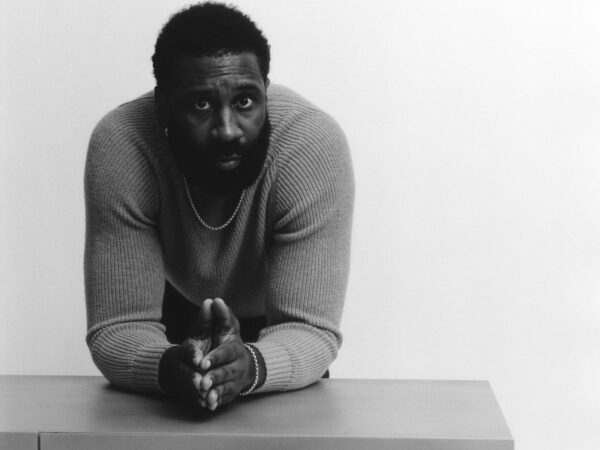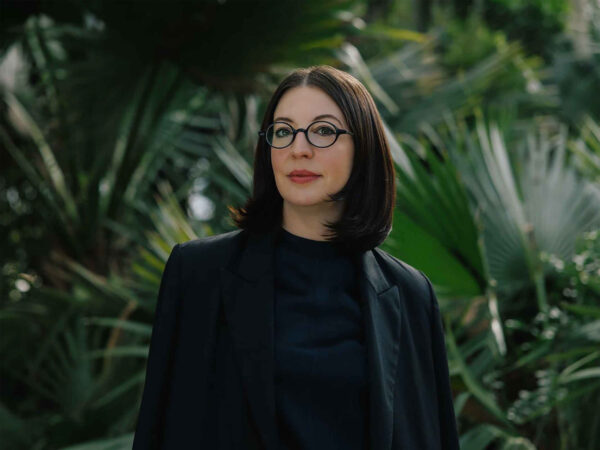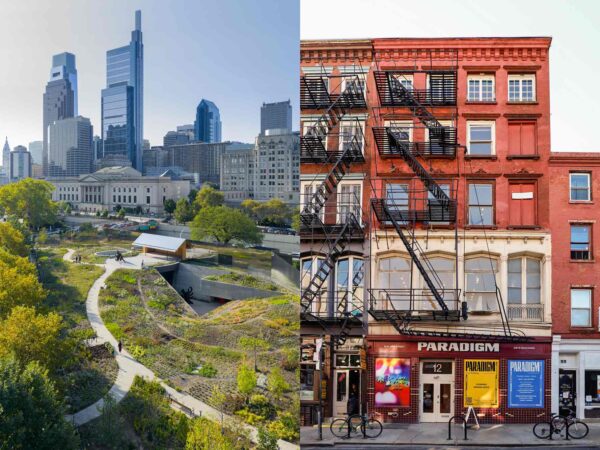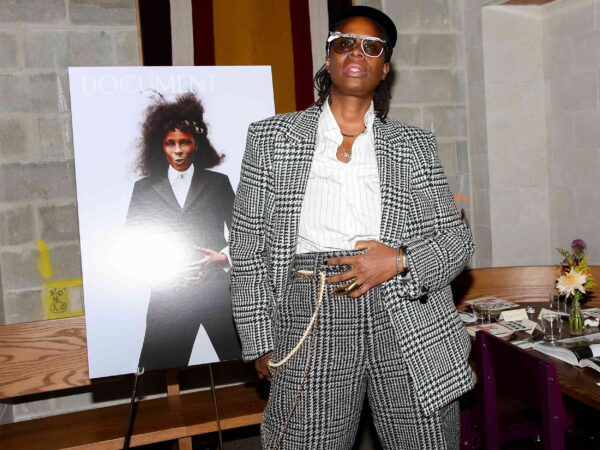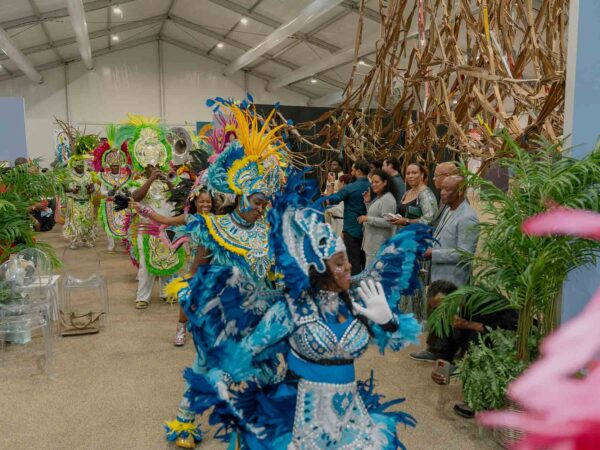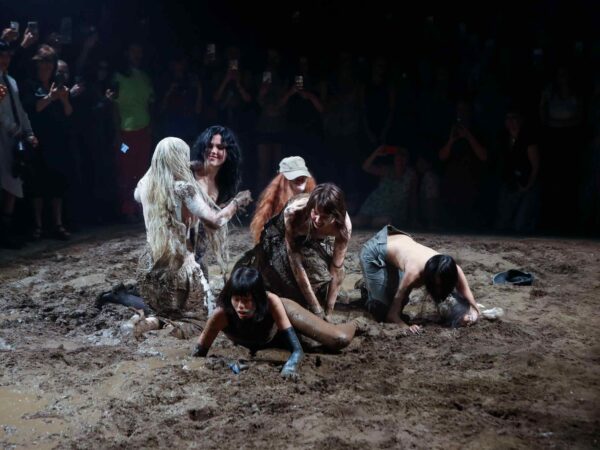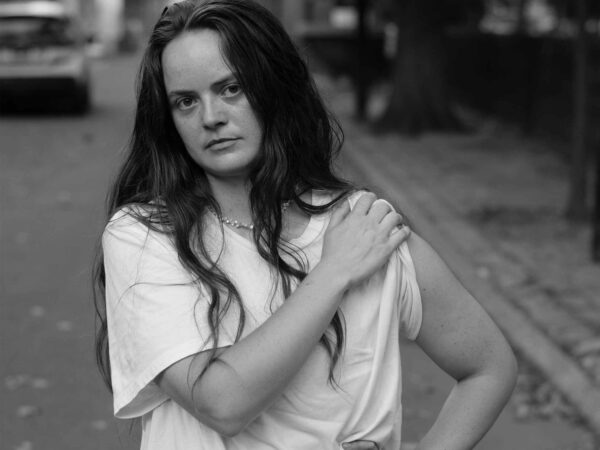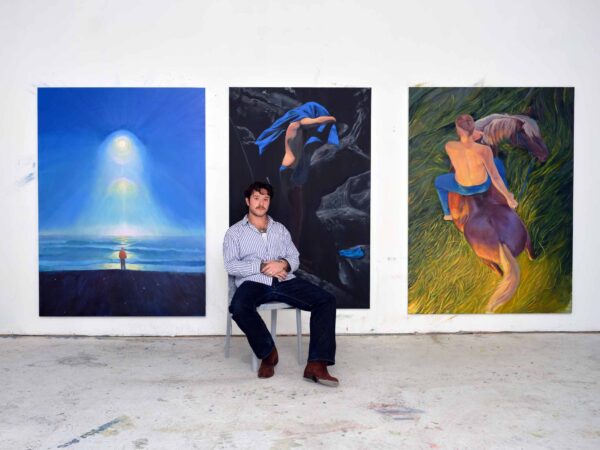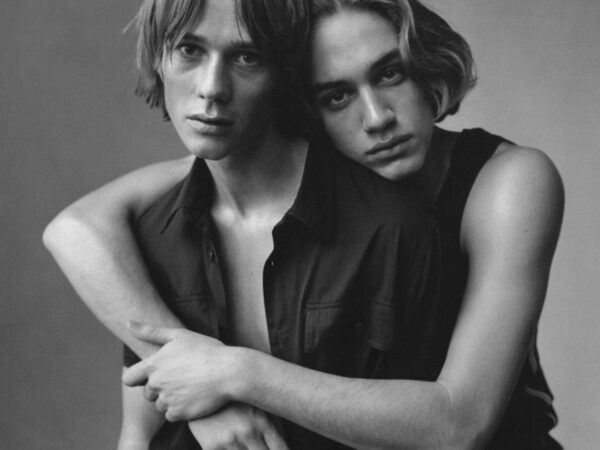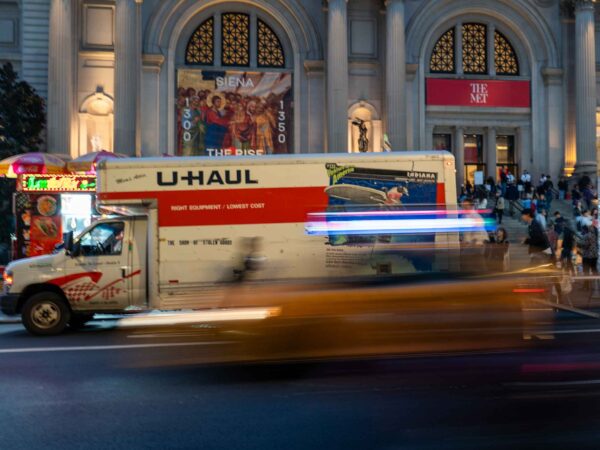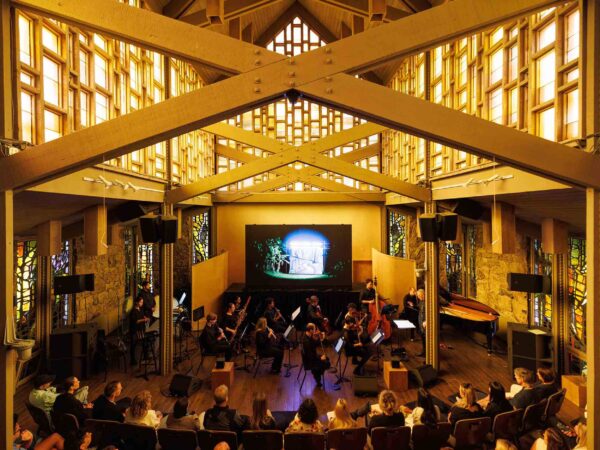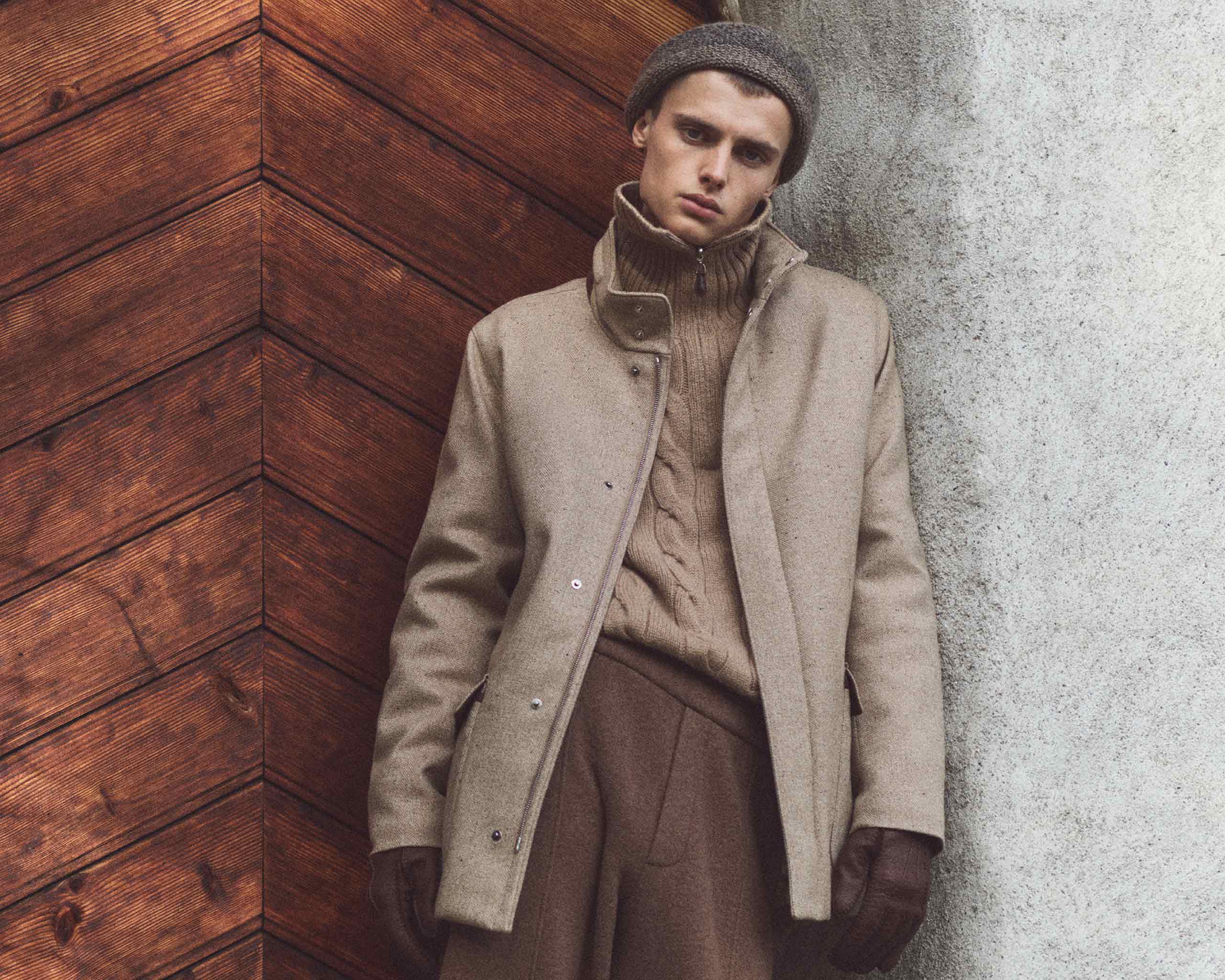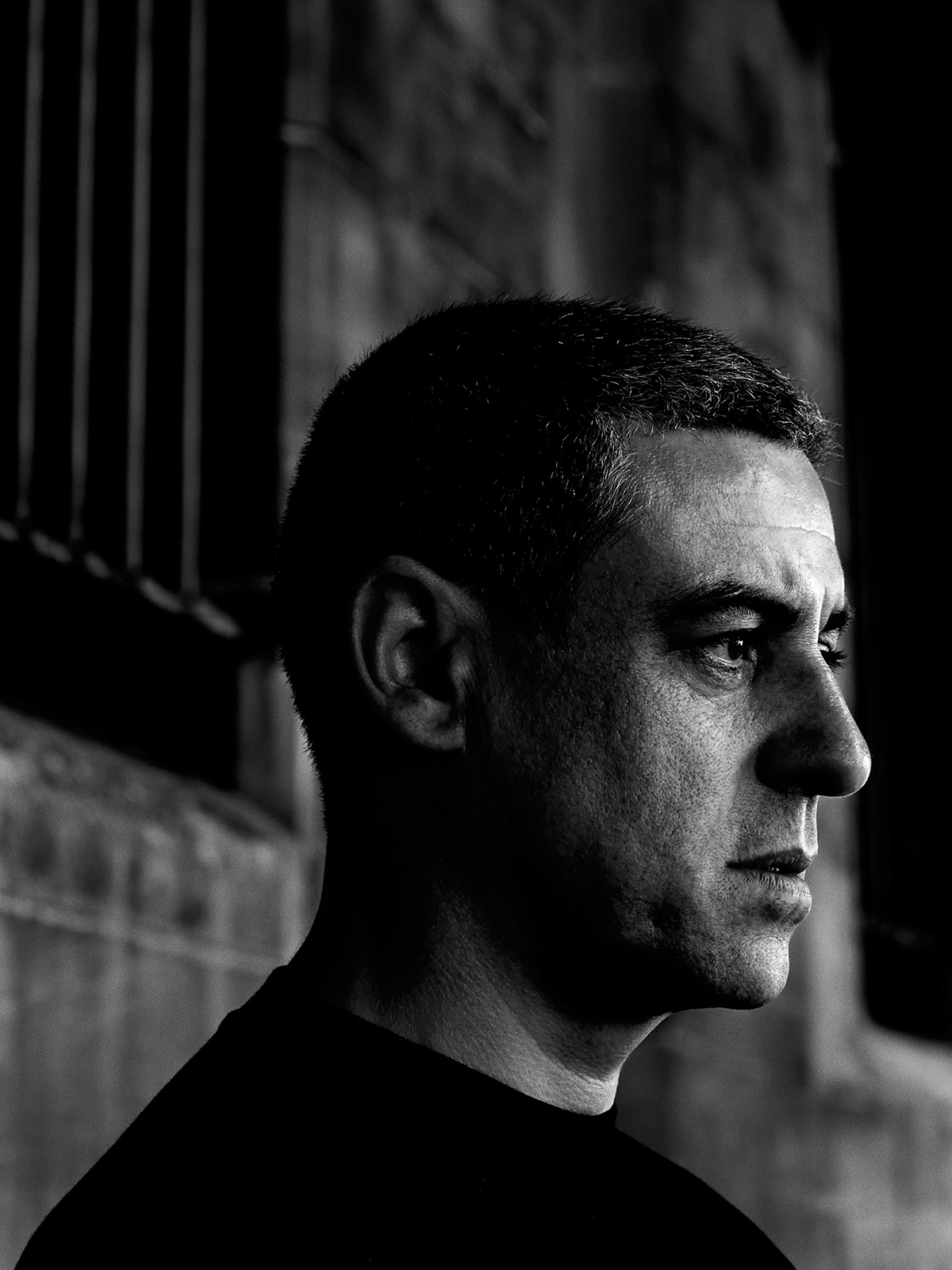
Sound designer Frédéric Sanchez and multimedia artist Laurie Anderson discuss the influence of memories, the relationship between image and sound, and Anderson’s new film, “Heart of a Dog” for Document's Fall/Winter 2015 issue.
During his formative years, Frédéric Sanchez became drawn to the experimental sounds of John Cage and Brian Eno. Meanwhile Laurie Anderson began playing with people’s perceptions of sound in the 70s by electronically manipulating voices and instrumentals. Anderson’s breakthrough piece, “O Superman,” turned her into a household name in the United Kingdom, where it reached number two on the Singles Chart. Martin Margiela met Sanchez by chance in 1988 and gave him the opportunity to create the soundtrack for his next runway show. Since then, Marc Jacobs, Comme des Garçons, Prada, and Givenchy have tapped the sound designer to conceptualize the music for their collections.
The two artists, who are linked through the common medium of sound, blur the lines between the aural and the visual: Anderson through her work across various mediums, and Sanchez by designing the soundtracks for runway shows and art installations. This fall, Anderson returns to directing with the release of Heart of a Dog. Sanchez and Anderson discuss what it takes to be an artist, how memory affects creative output, and the role of sound and aesthetics in storytelling.
Laurie Anderson—Where are you, Frédéric?
Frédéric Sanchez—In Normandy.
Laurie—Beautiful. What’s behind that sheet on your wall?
Frédéric—On the wall? The windows and some trees.
Laurie—You don’t want to see trees?
Frédéric—Well, it’s nighttime now and when I work in the studio, I like to be surrounded in my cavern. [Laughs] So I know your work very well. And I have some experience with it not a long time ago: Last year I worked on the Prada exhibition Art or Sound, where your work was included. I organized all the sound for the exhibition. I work a lot with them.
Laurie—Can I ask you something? What is that snapping sound?
Frédéric—This sound? [Clicking]. It’s just me playing with my pen! It’s making music! [Laughs]. I remember for Prada a long time ago you did [your holographic installation] Dal Vivo. I was very impressed—it’s really something I’m looking at with my work.
Laurie—In what way?
Frédéric—This idea to be with the sound—or with the image—in two places at the same time.
Laurie—Yes. How does that work with you? How do you make that work?
Frédéric—For me, sound has always related to something with memories, like the experience with my grandfather who couldn’t go back to Spain because of Franco[’s dictatorship]. He was always listening to the Spanish radio. He was in Paris, but at the same time he was in Spain with the sound. What I’m doing all the time with the sound is this research of being in different places in a mental way.
Laurie—Can you give me an example of one of your recent pieces that does that?
Frédéric—Three years ago I did a piece Une utile illusion. It was at Galerie Serge le Borgne in Paris. It used the theater technique where I was reading the description of the scene. It was this idea that the person who listens visualizes his own fantasy. I’m really into that; I always research and work with sound. For a long time that has really impressed me with your work.
“What I’m doing all the time with the sound is this research of being in different places in a mental way.”
Laurie—That’s actually why I usually take music out. Let’s say you have a story about a forest, a storm, and a person walking through it. The last thing you want to do is have imagery or sound connected to that. I gradually pare things down and pare things down until there’s more and more room for the person who is listening to enter into that and use their imagination. What you’re saying is that you have a kind of collaboration with people and leave room for their imagination.
Frédéric—Yes. I remember once listening to you [speak] a very long time ago, and you were talking about a story where you were on a plane. I don’t know if it was from one of your pieces or if it was a real story, which is actually nice—if it’s real or unreal. You were on a plane, and there was someone sitting near you who [looked through the window and] said she didn’t know the stars were so close—but it was actually a city. That is something so poetic, these kinds of ideas. I saw your movie Heart of a Dog, and there’s something about that too. It’s not just images; there is something behind that.
Laurie—I think the film also uses a lot of those techniques because it’s just non-stop talking—just blah blah—and I tried to make that your guide through these ideas and then make the visual language very simple, very loop-like, nothing really complicated. I find a lot of times if something isn’t working I have to ask: What’s leading? Is the story leading? Is the picture leading? Is the music leading? If I find that there is too much going on—which I find is usually the case—I take everything else out except what’s leading. How do you tell your story well? You can start using other things in it, but if it starts getting too fancy, just take it out. I’m always editing to make things simpler. With this film, I kept taking music out, I kept taking pictures out, because they got in the way of the story. The story is the driver—it drives everything. I found that I’m less and less a so-called “multimedia artist” and just someone who is interested in story.
Frédéric—For me it’s something that is a very strange thing in Europe. Because you think that you have the “big past,” but for people like me the past has disappeared because of the last war. I’m trying to reconstruct a story through the sound. The sound has this aspect for me.
Laurie—What are you reconstructing?
Frédéric—Something that has been lost, something that has disappeared. People have disappeared; I’m very concerned today by what’s happening in the Middle East, Syria, when you see these people that have to leave their country. My family lived during the Spanish Civil War, and with the sound I’m trying to capture fragments of memories, to reconstruct these fragments. What is very interesting is that I do this work myself, for my personal work, but at the same time what I do for commercial work is not far from that because of its fragments of pictures, fragments of memories that I put together. Twenty five years ago when I started to do this work, I wasn’t thinking about that, but more and more I’ve learned what was inside me and why I was doing this with the sound. For example, 30 years ago when I was 15, I was completely obsessed with music, but I didn’t see myself as a musician. I was doing things with sound, but it was not really music. Then, more and more, something appears like fate, you try to keep making it appear.
I recently listened to Nothing in My Pockets.
Laurie—Oh, you listened to that? [Laughs]. You’re one of three people in the world who heard that! That’s funny. I loved that project for Radio France. But I would never again do an audio diary, because you would have to listen to all of your days over again. It’s not like reading something—you listen through in real time to decide what to do with it. I loved making it and I hated editing it.
Frédéric—Do you think it’s easier to do with images?
“I’ve thought many times about this idea of making records, but it’s not really my thing. My thing is to build an environment with the sound.”
Laurie—I think so because you can move through them more quickly; you can fast-forward and you can’t do that with sound. You just can’t fast-forward and still get an idea of what it is. I love that sound forces you to listen in real time, I love that about it. It’s a very stabilizing thing for me, because you just have to sit back and let it go in clock-time.
Frédéric—When you make music, do you make images at the same time? When I do, I have to create images at the same time. I go take photographs—there’s a real relationship between image and music or sound. I can’t do sound or music without thinking of images.
Laurie—So then how do you put them together?
Frédéric—I don’t put them together; it just either starts with images or it starts with sound. I’m always going to think of an image, and I’ll do it.
Laurie—Wow, that’s so interesting! So do you have a painting studio right behind that curtain?
Frédéric—Well, I live in Le Havre, which is a great place because it’s very industrial. It’s a great place to make images or take photographs, which will always be related to the sound or music that I do. It’s not that at the end there will be both images and sound; it’s probably only going to be sound. But there is always this idea of images somewhere.
Laurie—Are these still images?
Frédéric—They are still images and moving images.
Laurie—Oh, either way. Wow, I don’t think I know anyone who works like that—who works at the same time but doesn’t combine them. It’s very interesting.
Frédéric—It’s very important for me; I’ve always done it. If I create music—because I do a lot of music for shows, in collaboration with people who use mood boards or images—it’s very important to have this relationship between the sound and the visual.
Laurie—I always advise people who are trying to think of what to call themselves to say “multimedia artist,” because it’s totally meaningless. Also I’ve found that the category thing doesn’t help me much at all. To say that I’m a musician , a filmmaker, a painter, or a writer—I do all those things, but my main aim was to avoid the “art police” who come in and say, “What do you think you’re doing writing a novel? You’re a painter!” Frédéric, you probably became an artist for similar reasons to what I did: you want to be free, you want to make something. But guess what, here come all the categories. Generally that has to do with marketing. When I was doing a lot of music, they would say, “OK, what bin are you going to be in? Electro-pop? Experimental electro? Pop electro? Pop-pop?” I didn’t make any distinctions between what I do, and for the longest time nobody ever asked what I wanted to do, so I didn’t decide. I still haven’t decided, so it’s nice to be vague about what you’re doing. I’m preparing for a painting show now in Geneva, September 16 it opens. Which is kind of ridiculous. It’s coming along! I’m used to doing things that I enjoy doing. I don’t really worry about people thinking, “Why painting? It’s just so retro!” So I don’t care. I don’t really care what people think.
Frédéric—We don’t care!
Laurie—I also have a film installation and some music. Probably like you, you don’t really have to put those into categories. You go out and take some photographs, then you’re back in the studio and you’re not worried that one thing is “music” and one is called “photography.” Right?
“For me, sound has always related to something with memories, like the experience with my grandfather who couldn’t go back to Spain because of Franco[’s dictatorship]…What I’m doing all the time with the sound is this research of being in different places in a mental way.”
Frédéric—In America it is true, but in Europe is it not easy to do it because people are really placed into categories. It’s true that I wanted to do something, to create something. Afterwards you don’t care if it’s sound or image—just something. You go above that. Let’s just carry on.
Laurie—Exactly, just carry on and try to make something beautiful, or dark, or disgusting, just something. Just make things!
Frédéric—Yes!
Laurie—You’re sitting in your studio now, is there anything you could play for us that would be easy?
Frédéric—Uh, it’s complicated!
Laurie—No, I know I hate when people ask me that and my answer is like, “Ah, not really!” What are you working on now?
Frédéric—At the moment I’m searching for things.
Laurie—Oh, that’s a nice time! How do you search?
Frédéric—I make sounds; it’s always very free. At the moment I’m writing also.
Laurie—Writing words?
Frédéric—Yes, writing something that is quite autobiographical. All my work, a lot of my personal work, is about memories.
Laurie—Yes, I’m definitely suspicious of memories. Think of how much time you spend in the past and how little you’re spending right this second. I’m always thinking of what you’ll say next or what you just said. For me even on a bigger level, I’m always thinking of different time frames than the one I’m in. I would love to be more connected to what’s going on now, but it’s hard when you’re trying to make something. Because a lot of making is trying to remember something, trying to remember it well with all the intensity that it had. In Heart of a Dog, for me, memory was also sound. It was a sound that I had forgotten, the sound in a hospital when I was a kid. I only remembered it through telling a story about myself. I remembered how much fear there was in that situation, and that wasn’t part of my story because it was too hard to tell. At that point, they just moved all the kids into the same place. So if you’re a kid and you’re afraid and all these kids around you are dying, you don’t really know what that is, and nobody really talks about it. Nobody in my family visited me, because they were too busy. So it was very, very scary for me. It was too scary to remember it correctly, so I remembered it in a different way—called repression, as the psychiatrists say. So in the film I tried to represent that sound through silence. There is a section right after that where there is no sound. That, in a movie theatre, is scary; it’s very scary when sound is turned off. It’s different on your computer because you’re surrounded by ambient sound, but when you’re in an immersive sound situation and the sound disappears you think: “Something has happened, something is wrong.” The hairs go up on the back of your neck because you’re thinking, “Did the projector break?” The image is still there but there is no sound. And it’s a very primitive feeling of dread in a way—something broke. I think for me also sound is very connected to true and false memories.
Frédéric—When are you going to show the movie?
Laurie—It will be in the cinema at the end of the month, this August. It will go to festivals. Actually for three or four months it will be out and around and then released in movie theatres.
I like that you’re in a moment of just looking around. I think that’s the greatest moment. The freedom to play different sounds and think, “What is it? Is it the beginning of an opera? An installation?” How do you think of imagining what a sound will become? Do you think something might be a beautiful symphony? Or a static sound under a bridge in a park? Or a pop song?
Frédéric—It’s installations, always in a place, in a room. This is important for me. I’ve thought many times about this idea of making records, but it’s not really my thing. My thing is to build an environment with the sound. The next one is a show I’m doing at the National Library here in Paris. It’s going to be a sound installation.
Laurie—What kinds of sounds will be in the library?
Frédéric—The library has a huge collection of very old recordings from the beginning of the 20th century. It’s called the Museum of the Voice.
Laurie—Beautiful.
Frédéric—It’s really beautiful. They’ve asked me to do something with that, to create an environment.
Laurie—What an incredible project!
Frédéric—Something I had done in the past was using this recording of the Guillaume Apollinaire [reading his poem] Le Voyageur (The Traveler). The project is about this idea of the traveler and all the voices in the library. I had this idea of the library scene in Wings of Desire by Wim Wenders, all the voices.
Laurie—You know, when he was mixing that movie in Cannes he sent me a message saying, “Can you send me some angel fragments? I’m mixing my movie.” I didn’t ask him, “What’s an angel fragment?” I just sent him a little selection of things that I thought sounded like angel fragments. I said, “Check these out and if they work I’ll record them and get you a good copy of them.” I sent him a cassette and he just used the cassette! But the way he used it was so fantastic: he used it as headphone leakage in the scene with a guy on the train.
Frédéric—It was beautiful.
Laurie—You know, he’s so smart about the use of music and all the different ways it can sound. He’s not a purist in terms of the way the soundtrack lays under the dialogue in a movie. He has sound coming from all sorts of sources and distortions and places—it’s so moving. Instead of having the big, monolithic soundtrack where it’s just about emotional manipulation and it’s like, “Here’s how you feel about this house, here’s how you feel about this character.” You’re helpless. He doesn’t do that with music or sound, and I think he’s one of the geniuses that way. I love hearing how he treats and filters music. I’m very excited about the Museum of Voices, when is that happening?
Frédéric—It’s going to be this November.
Laurie—Coming right up! I’m likely going to be there around that time, so I’ll come check it out! I’ll see you then.
Frédéric—Yes, please do!

